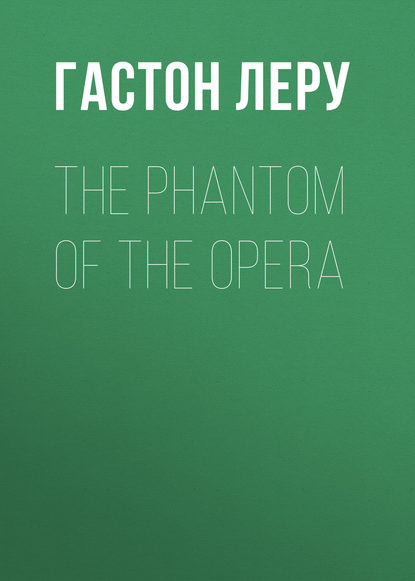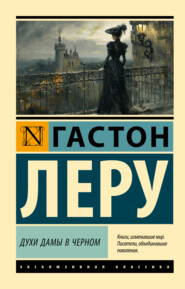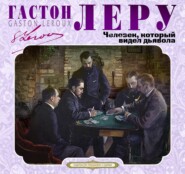По всем вопросам обращайтесь на: info@litportal.ru
(©) 2003-2025.
✖
The Phantom of the Opera
Автор
Год написания книги
2018
Настройки чтения
Размер шрифта
Высота строк
Поля
That Mr. Leroux has used, for the scene of his story, the Paris Opera House as it really is and has not created a building out of his imagination, is shown by this interesting description of it taken from an article which appeared in Scribner's Magazine in 1879, a short time after the building was completed:
"The new Opera House, commenced under the Empire and finished under the Republic, is the most complete building of the kind in the world and in many respects the most beautiful. No European capital possesses an opera house so comprehensive in plan and execution, and none can boast an edifice equally vast and splendid.
"The site of the Opera House was chosen in 1861. It was determined to lay the foundation exceptionally deep and strong. It was well known that water would be met with, but it was impossible to foresee at what depth or in what quantity it would be found. Exceptional depth also was necessary, as the stage arrangements were to be such as to admit a scene fifty feet high to be lowered on its frame. It was therefore necessary to lay a foundation in a soil soaked with water which should be sufficiently solid to sustain a weight of 22,000,000 pounds, and at the same time to be perfectly dry, as the cellars were intended for the storage of scenery and properties. While the work was in progress, the excavation was kept free from water by means of eight pumps, worked by steam power, and in operation, without interruption, day and night, from March second to October thirteenth. The floor of the cellar was covered with a layer of concrete, then with two coats of cement, another layer of concrete and a coat of bitumen. The wall includes an outer wall built as a coffer-dam, a brick wall, a coat of cement, and a wall proper, a little over a yard thick. After all this was done the whole was filled with water, in order that the fluid, by penetrating into the most minute interstices, might deposit a sediment which would close them more surely and perfectly than it would be possible to do by hand. Twelve years elapsed before the completion of the building, and during that time it was demonstrated that the precautions taken secured absolute impermeability and solidity.
"The events of 1870 interrupted work just as it was about to be prosecuted most vigorously, and the new Opera House was put to new and unexpected uses. During the siege, it was converted into a vast military storehouse and filled with a heterogeneous mass of goods. After the siege the building fell into the hands of the Commune and the roof was turned into a balloon station. The damage done, however, was slight.
"The fine stone employed in the construction was brought from quarries in Sweden, Scotland, Italy, Algeria, Finland, Spain, Belgium and France. While work on the exterior was in progress, the building was covered in by a wooden shell, rendered transparent by thousands of small panes of glass. In 1867 a swarm of men, supplied with hammers and axes, stripped the house of its habit, and showed in all its splendor the great structure. No picture can do justice to the rich colors of the edifice or to the harmonious tone resulting from the skilful use of many diverse materials. The effect of the frontage is completed by the cupola of the auditorium, topped with a cap of bronze sparingly adorned with gilding. Farther on, on a level with the towers of Notre-Dame, is the gable end of the roof of the stage, a 'Pegasus', by M. Lequesne, rising at either end of the roof, and a bronze group by M. Millet, representing 'Apollo lifting his golden lyre', commanding the apex. Apollo, it may here be mentioned, is useful as well as ornamental, for his lyre is tipped with a metal point which does duty as a lightning-rod, and conducts the fluid to the body and down the nether limbs of the god.
"The spectator, having climbed ten steps and left behind him a gateway, reaches a vestibule in which are statues of Lully, Rameau, Gluck, and Handel. Ten steps of green Swedish marble lead to a second vestibule for ticket-sellers. Visitors who enter by the pavilion reserved for carriages pass through a hallway where ticket offices are situated. The larger number of the audience, before entering the auditorium, traverse a large circular vestibule located exactly beneath it. The ceiling of this portion of the building is upheld by sixteen fluted columns of Jura stone, with white marble capitals, forming a portico. Here servants are to await their masters, and spectators may remain until their carriages are summoned. The third entrance, which is quite distinct from the others, is reserved for the Executive. The section of the building set aside for the use of the Emperor Napoleon was to have included an antechamber for the bodyguards; a salon for the aides-de-camp; a large salon and a smaller one for the Empress; hat and cloak rooms, etc. Moreover, there were to be in close proximity to the entrance, stables for three coaches, for the outriders' horses, and for the twenty-one horsemen acting as an escort; a station for a squad of infantry of thirty-one men and ten cent-gardes, and a stable for the horses of the latter; and, besides, a salon for fifteen or twenty domestics. Thus arrangements had to be made to accommodate in this part of the building about one hundred persons, fifty horses, and half-a-dozen carriages. The fall of the Empire suggested some changes, but ample provision still exists for emergencies.
"Its novel conception, perfect fitness, and rare splendor of material, make the grand stairway unquestionably one of the most remarkable features of the building. It presents to the spectator, who has just passed through the subscribers' pavilion, a gorgeous picture. From this point he beholds the ceiling formed by the central landing; this and the columns sustaining it, built of Echaillon stone, are honeycombed with arabesques and heavy with ornaments; the steps are of white marble, and antique red marble balusters rest on green marble sockets and support a balustrade of onyx. To the right and to the left of this landing are stairways to the floor, on a plane with the first row of boxes. On this floor stand thirty monolith columns of Sarrancolin marble, with white marble bases and capitals. Pilasters of peach-blossom and violet stone are against the corresponding walls. More than fifty blocks had to be extracted from the quarry to find thirty perfect monoliths.
"The foyer de la danse has particular interest for the habitues of the Opera. It is a place of reunion to which subscribers to three performances a week are admitted between the acts in accordance with a usage established in 1870. Three immense looking-glasses cover the back wall of the FOYER, and a chandelier with one hundred and seven burners supplies it with light. The paintings include twenty oval medallions, in which are portrayed the twenty danseuses of most celebrity since the opera has existed in France, and four panels by M. Boulanger, typifying 'The War Dance', 'The Rustic Dance', 'The Dance of Love' and 'The Bacchic Dance.' While the ladies of the ballet receive their admirers in this foyer, they can practise their steps. Velvet-cushioned bars have to this end been secured at convenient points, and the floor has been given the same slope as that of the stage, so that the labor expended may be thoroughly profitable to the performance. The singers' foyer, on the same floor, is a much less lively resort than the foyer de la danse, as vocalists rarely leave their dressing-rooms before they are summoned to the stage. Thirty panels with portraits of the artists of repute in the annals of the Opera adorn this foyer.
"Some estimate … may be arrived at by sitting before the concierge an hour or so before the representation commences. First appear the stage carpenters, who are always seventy, and sometimes, when L'Africaine, for example, with its ship scene, is the opera, one hundred and ten strong. Then come stage upholsterers, whose sole duty is to lay carpets, hang curtains, etc.; gas-men, and a squad of firemen. Claqueurs, call-boys, property-men, dressers, coiffeurs, supernumeraries, and artists, follow. The supernumeraries number about one hundred; some are hired by the year, but the 'masses' are generally recruited at the last minute and are generally working-men who seek to add to their meagre earnings. There are about a hundred choristers, and about eighty musicians.
"Next we behold equeries, whose horses are hoisted on the stage by means of an elevator; electricians who manage the light-producing batteries; hydrauliciens to take charge of the water-works in ballets like La Source; artificers who prepare the conflagration in Le Profeta; florists who make ready Margarita's garden, and a host of minor employees. This personnel is provided for as follows: Eighty dressing-rooms are reserved for the artists, each including a small antechamber, the dressing-room proper, and a little closet. Besides these apartments, the Opera has a dressing-room for sixty male, and another for fifty female choristers; a third for thirty-four male dancers; four dressing-rooms for twenty female dancers of different grades; a dressing-room for one hundred and ninety supernumeraries, etc."
A few figures taken from the article will suggest the enormous capacity and the perfect convenience of the house. "There are 2,531 doors and 7,593 keys; 14 furnaces and grates heat the house; the gaspipes if connected would form a pipe almost 16 miles long; 9 reservoirs, and two tanks hold 22,222 gallons of water and distribute their contents through 22,829 2-5 feet of piping; 538 persons have places assigned wherein to change their attire. The musicians have a foyer with 100 closets for their instruments."
The author remarks of his visit to the Opera House that it "was almost as bewildering as it was agreeable. Giant stairways and colossal halls, huge frescoes and enormous mirrors, gold and marble, satin and velvet, met the eye at every turn."
In a recent letter Mr. Andre Castaigne, whose remarkable pictures illustrate the text, speaks of a river or lake under the Opera House and mentions the fact that there are now also three metropolitan railway tunnels, one on top of the other.
notes
1
I have the anecdote, which is quite authentic, from M. Pedro Gailhard himself, the late manager of the Opera.
2
Flash notes drawn on the "Bank of St. Farce" in France correspond with those drawn on the "Bank of Engraving" in England.—Translator's Note.
3
M. Pedro Gailhard has himself told me that he created a few additional posts as door-shutters for old stage-carpenters whom he was unwilling to dismiss from the service of the Opera.
4
In those days, it was still part of the firemen's duty to watch over the safety of the Opera house outside the performances; but this service has since been suppressed. I asked M. Pedro Gailhard the reason, and he replied:
"It was because the management was afraid that, in their utter inexperience of the cellars of the Opera, the firemen might set fire to the building!"
5
Like the Persian, I can give no further explanation touching the apparition of this shade. Whereas, in this historic narrative, everything else will be normally explained, however abnormal the course of events may seem, I can not give the reader expressly to understand what the Persian meant by the words, "It is some one much worse than that!" The reader must try to guess for himself, for I promised M. Pedro Gailhard, the former manager of the Opera, to keep his secret regarding the extremely interesting and useful personality of the wandering, cloaked shade which, while condemning itself to live in the cellars of the Opera, rendered such immense services to those who, on gala evenings, for instance, venture to stray away from the stage. I am speaking of state services; and, upon my word of honor, I can say no more.
6
All the water had to be exhausted, in the building of the Opera. To give an idea of the amount of water that was pumped up, I can tell the reader that it represented the area of the courtyard of the Louvre and a height half as deep again as the towers of Notre Dame. And nevertheless the engineers had to leave a lake.
7
These two pairs of boots, which were placed, according to the Persian's papers, just between the set piece and the scene from the ROI DE LAHORE, on the spot where Joseph Buquet was found hanging, were never discovered. They must have been taken by some stage-carpenter or "door-shutter."
8
An official report from Tonkin, received in Paris at the end of July, 1909, relates how the famous pirate chief De Tham was tracked, together with his men, by our soldiers; and how all of them succeeded in escaping, thanks to this trick of the reeds.
9
DAROGA is Persian for chief of police.
10
The Persian might easily have admitted that Erik's fate also interested himself, for he was well aware that, if the government of Teheran had learned that Erik was still alive, it would have been all up with the modest pension of the erstwhile daroga. It is only fair, however, to add that the Persian had a noble and generous heart; and I do not doubt for a moment that the catastrophes which he feared for others greatly occupied his mind. His conduct, throughout this business, proves it and is above all praise.
11
It is very natural that, at the time when the Persian was writing, he should take so many precautions against any spirit of incredulity on the part of those who were likely to read his narrative. Nowadays, when we have all seen this sort of room, his precautions would be superfluous.
12
Even so, I am convinced that it would be easy to reach it by draining the lake, as I have repeatedly requested the Ministry of Fine Arts to do. I was speaking about it to M. Dujardin-Beaumetz, the under-secretary for fine arts, only forty-eight hours before the publication of this book. Who knows but that the score of DON JUAN TRIUMPHANT might yet be discovered in the house on the lake?
13
See the interview of the special correspondent of the MATIN, with Mohammed-Ali Bey, on the day after the entry of the Salonika troops into Constantinople.
"The new Opera House, commenced under the Empire and finished under the Republic, is the most complete building of the kind in the world and in many respects the most beautiful. No European capital possesses an opera house so comprehensive in plan and execution, and none can boast an edifice equally vast and splendid.
"The site of the Opera House was chosen in 1861. It was determined to lay the foundation exceptionally deep and strong. It was well known that water would be met with, but it was impossible to foresee at what depth or in what quantity it would be found. Exceptional depth also was necessary, as the stage arrangements were to be such as to admit a scene fifty feet high to be lowered on its frame. It was therefore necessary to lay a foundation in a soil soaked with water which should be sufficiently solid to sustain a weight of 22,000,000 pounds, and at the same time to be perfectly dry, as the cellars were intended for the storage of scenery and properties. While the work was in progress, the excavation was kept free from water by means of eight pumps, worked by steam power, and in operation, without interruption, day and night, from March second to October thirteenth. The floor of the cellar was covered with a layer of concrete, then with two coats of cement, another layer of concrete and a coat of bitumen. The wall includes an outer wall built as a coffer-dam, a brick wall, a coat of cement, and a wall proper, a little over a yard thick. After all this was done the whole was filled with water, in order that the fluid, by penetrating into the most minute interstices, might deposit a sediment which would close them more surely and perfectly than it would be possible to do by hand. Twelve years elapsed before the completion of the building, and during that time it was demonstrated that the precautions taken secured absolute impermeability and solidity.
"The events of 1870 interrupted work just as it was about to be prosecuted most vigorously, and the new Opera House was put to new and unexpected uses. During the siege, it was converted into a vast military storehouse and filled with a heterogeneous mass of goods. After the siege the building fell into the hands of the Commune and the roof was turned into a balloon station. The damage done, however, was slight.
"The fine stone employed in the construction was brought from quarries in Sweden, Scotland, Italy, Algeria, Finland, Spain, Belgium and France. While work on the exterior was in progress, the building was covered in by a wooden shell, rendered transparent by thousands of small panes of glass. In 1867 a swarm of men, supplied with hammers and axes, stripped the house of its habit, and showed in all its splendor the great structure. No picture can do justice to the rich colors of the edifice or to the harmonious tone resulting from the skilful use of many diverse materials. The effect of the frontage is completed by the cupola of the auditorium, topped with a cap of bronze sparingly adorned with gilding. Farther on, on a level with the towers of Notre-Dame, is the gable end of the roof of the stage, a 'Pegasus', by M. Lequesne, rising at either end of the roof, and a bronze group by M. Millet, representing 'Apollo lifting his golden lyre', commanding the apex. Apollo, it may here be mentioned, is useful as well as ornamental, for his lyre is tipped with a metal point which does duty as a lightning-rod, and conducts the fluid to the body and down the nether limbs of the god.
"The spectator, having climbed ten steps and left behind him a gateway, reaches a vestibule in which are statues of Lully, Rameau, Gluck, and Handel. Ten steps of green Swedish marble lead to a second vestibule for ticket-sellers. Visitors who enter by the pavilion reserved for carriages pass through a hallway where ticket offices are situated. The larger number of the audience, before entering the auditorium, traverse a large circular vestibule located exactly beneath it. The ceiling of this portion of the building is upheld by sixteen fluted columns of Jura stone, with white marble capitals, forming a portico. Here servants are to await their masters, and spectators may remain until their carriages are summoned. The third entrance, which is quite distinct from the others, is reserved for the Executive. The section of the building set aside for the use of the Emperor Napoleon was to have included an antechamber for the bodyguards; a salon for the aides-de-camp; a large salon and a smaller one for the Empress; hat and cloak rooms, etc. Moreover, there were to be in close proximity to the entrance, stables for three coaches, for the outriders' horses, and for the twenty-one horsemen acting as an escort; a station for a squad of infantry of thirty-one men and ten cent-gardes, and a stable for the horses of the latter; and, besides, a salon for fifteen or twenty domestics. Thus arrangements had to be made to accommodate in this part of the building about one hundred persons, fifty horses, and half-a-dozen carriages. The fall of the Empire suggested some changes, but ample provision still exists for emergencies.
"Its novel conception, perfect fitness, and rare splendor of material, make the grand stairway unquestionably one of the most remarkable features of the building. It presents to the spectator, who has just passed through the subscribers' pavilion, a gorgeous picture. From this point he beholds the ceiling formed by the central landing; this and the columns sustaining it, built of Echaillon stone, are honeycombed with arabesques and heavy with ornaments; the steps are of white marble, and antique red marble balusters rest on green marble sockets and support a balustrade of onyx. To the right and to the left of this landing are stairways to the floor, on a plane with the first row of boxes. On this floor stand thirty monolith columns of Sarrancolin marble, with white marble bases and capitals. Pilasters of peach-blossom and violet stone are against the corresponding walls. More than fifty blocks had to be extracted from the quarry to find thirty perfect monoliths.
"The foyer de la danse has particular interest for the habitues of the Opera. It is a place of reunion to which subscribers to three performances a week are admitted between the acts in accordance with a usage established in 1870. Three immense looking-glasses cover the back wall of the FOYER, and a chandelier with one hundred and seven burners supplies it with light. The paintings include twenty oval medallions, in which are portrayed the twenty danseuses of most celebrity since the opera has existed in France, and four panels by M. Boulanger, typifying 'The War Dance', 'The Rustic Dance', 'The Dance of Love' and 'The Bacchic Dance.' While the ladies of the ballet receive their admirers in this foyer, they can practise their steps. Velvet-cushioned bars have to this end been secured at convenient points, and the floor has been given the same slope as that of the stage, so that the labor expended may be thoroughly profitable to the performance. The singers' foyer, on the same floor, is a much less lively resort than the foyer de la danse, as vocalists rarely leave their dressing-rooms before they are summoned to the stage. Thirty panels with portraits of the artists of repute in the annals of the Opera adorn this foyer.
"Some estimate … may be arrived at by sitting before the concierge an hour or so before the representation commences. First appear the stage carpenters, who are always seventy, and sometimes, when L'Africaine, for example, with its ship scene, is the opera, one hundred and ten strong. Then come stage upholsterers, whose sole duty is to lay carpets, hang curtains, etc.; gas-men, and a squad of firemen. Claqueurs, call-boys, property-men, dressers, coiffeurs, supernumeraries, and artists, follow. The supernumeraries number about one hundred; some are hired by the year, but the 'masses' are generally recruited at the last minute and are generally working-men who seek to add to their meagre earnings. There are about a hundred choristers, and about eighty musicians.
"Next we behold equeries, whose horses are hoisted on the stage by means of an elevator; electricians who manage the light-producing batteries; hydrauliciens to take charge of the water-works in ballets like La Source; artificers who prepare the conflagration in Le Profeta; florists who make ready Margarita's garden, and a host of minor employees. This personnel is provided for as follows: Eighty dressing-rooms are reserved for the artists, each including a small antechamber, the dressing-room proper, and a little closet. Besides these apartments, the Opera has a dressing-room for sixty male, and another for fifty female choristers; a third for thirty-four male dancers; four dressing-rooms for twenty female dancers of different grades; a dressing-room for one hundred and ninety supernumeraries, etc."
A few figures taken from the article will suggest the enormous capacity and the perfect convenience of the house. "There are 2,531 doors and 7,593 keys; 14 furnaces and grates heat the house; the gaspipes if connected would form a pipe almost 16 miles long; 9 reservoirs, and two tanks hold 22,222 gallons of water and distribute their contents through 22,829 2-5 feet of piping; 538 persons have places assigned wherein to change their attire. The musicians have a foyer with 100 closets for their instruments."
The author remarks of his visit to the Opera House that it "was almost as bewildering as it was agreeable. Giant stairways and colossal halls, huge frescoes and enormous mirrors, gold and marble, satin and velvet, met the eye at every turn."
In a recent letter Mr. Andre Castaigne, whose remarkable pictures illustrate the text, speaks of a river or lake under the Opera House and mentions the fact that there are now also three metropolitan railway tunnels, one on top of the other.
notes
1
I have the anecdote, which is quite authentic, from M. Pedro Gailhard himself, the late manager of the Opera.
2
Flash notes drawn on the "Bank of St. Farce" in France correspond with those drawn on the "Bank of Engraving" in England.—Translator's Note.
3
M. Pedro Gailhard has himself told me that he created a few additional posts as door-shutters for old stage-carpenters whom he was unwilling to dismiss from the service of the Opera.
4
In those days, it was still part of the firemen's duty to watch over the safety of the Opera house outside the performances; but this service has since been suppressed. I asked M. Pedro Gailhard the reason, and he replied:
"It was because the management was afraid that, in their utter inexperience of the cellars of the Opera, the firemen might set fire to the building!"
5
Like the Persian, I can give no further explanation touching the apparition of this shade. Whereas, in this historic narrative, everything else will be normally explained, however abnormal the course of events may seem, I can not give the reader expressly to understand what the Persian meant by the words, "It is some one much worse than that!" The reader must try to guess for himself, for I promised M. Pedro Gailhard, the former manager of the Opera, to keep his secret regarding the extremely interesting and useful personality of the wandering, cloaked shade which, while condemning itself to live in the cellars of the Opera, rendered such immense services to those who, on gala evenings, for instance, venture to stray away from the stage. I am speaking of state services; and, upon my word of honor, I can say no more.
6
All the water had to be exhausted, in the building of the Opera. To give an idea of the amount of water that was pumped up, I can tell the reader that it represented the area of the courtyard of the Louvre and a height half as deep again as the towers of Notre Dame. And nevertheless the engineers had to leave a lake.
7
These two pairs of boots, which were placed, according to the Persian's papers, just between the set piece and the scene from the ROI DE LAHORE, on the spot where Joseph Buquet was found hanging, were never discovered. They must have been taken by some stage-carpenter or "door-shutter."
8
An official report from Tonkin, received in Paris at the end of July, 1909, relates how the famous pirate chief De Tham was tracked, together with his men, by our soldiers; and how all of them succeeded in escaping, thanks to this trick of the reeds.
9
DAROGA is Persian for chief of police.
10
The Persian might easily have admitted that Erik's fate also interested himself, for he was well aware that, if the government of Teheran had learned that Erik was still alive, it would have been all up with the modest pension of the erstwhile daroga. It is only fair, however, to add that the Persian had a noble and generous heart; and I do not doubt for a moment that the catastrophes which he feared for others greatly occupied his mind. His conduct, throughout this business, proves it and is above all praise.
11
It is very natural that, at the time when the Persian was writing, he should take so many precautions against any spirit of incredulity on the part of those who were likely to read his narrative. Nowadays, when we have all seen this sort of room, his precautions would be superfluous.
12
Even so, I am convinced that it would be easy to reach it by draining the lake, as I have repeatedly requested the Ministry of Fine Arts to do. I was speaking about it to M. Dujardin-Beaumetz, the under-secretary for fine arts, only forty-eight hours before the publication of this book. Who knows but that the score of DON JUAN TRIUMPHANT might yet be discovered in the house on the lake?
13
See the interview of the special correspondent of the MATIN, with Mohammed-Ali Bey, on the day after the entry of the Salonika troops into Constantinople.

















